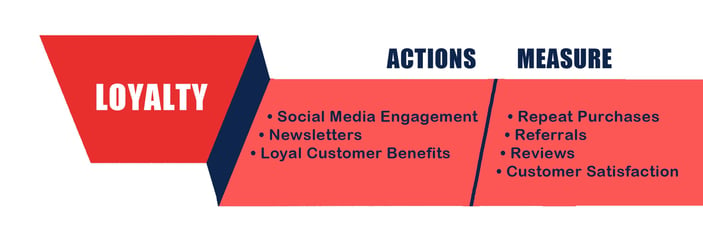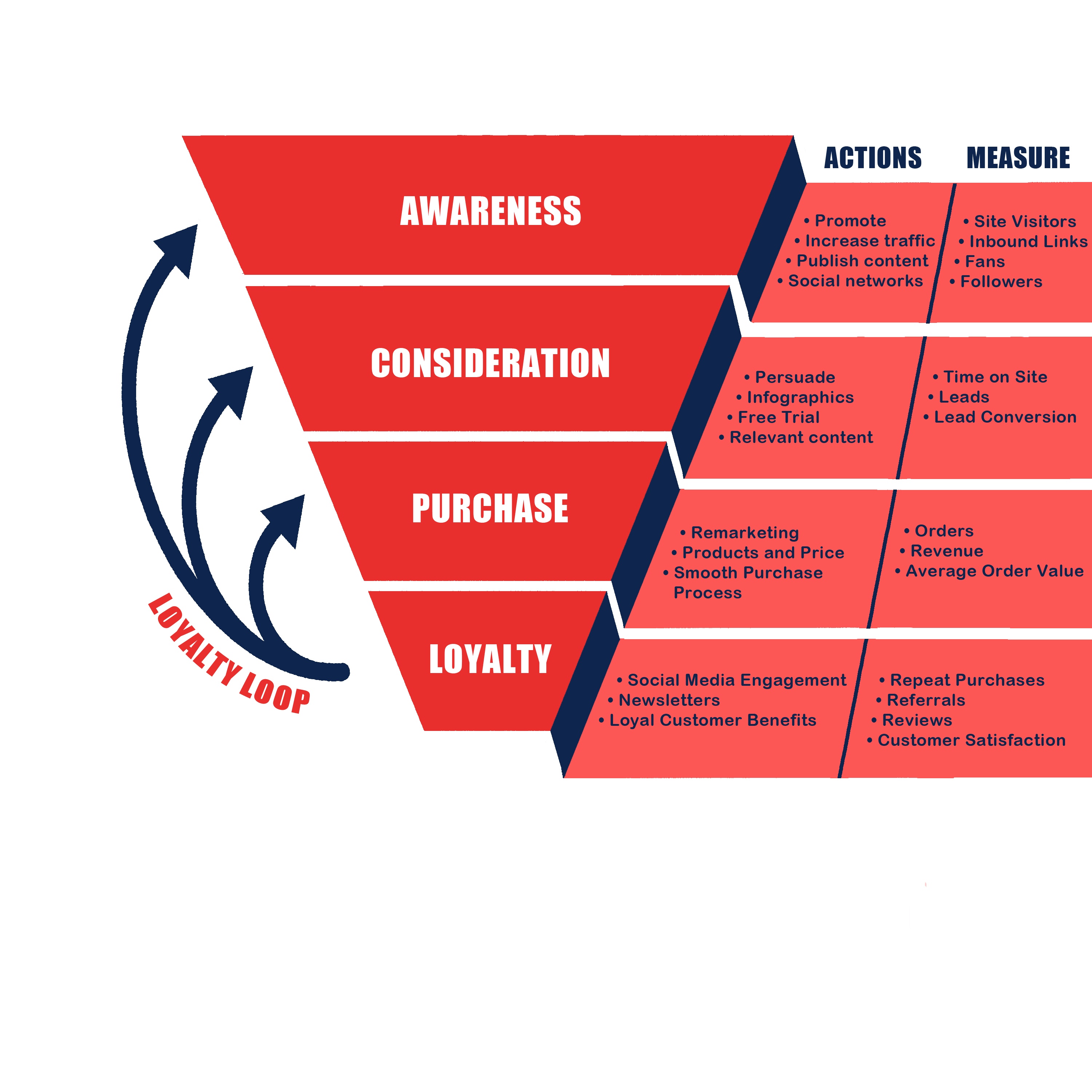With a variety of marketing channels to address your audience, it can be tricky to know what marketing strategies to implement when. While profit is often the ultimate goal, it’s important to consider how to market to customers at different stages of the purchase process and all the ways to measure success with your audience.
Marketing serves different purposes and is designed differently based on where the customer is in their purchase journey. Say you run a bakery. A straightforward marketing objective might be to increase the average customer order to $20. To accomplish this you might feature new pastries or offer a discount on bulk bread orders. How about if your marketing objective is to draw more foot-traffic to your bakery? What tools are you going to use to draw people in off the street or get them to seek out your bakery over others?
Understanding the Purchase Funnel
A way of understanding the customer’s decision process is the purchase funnel. The customer considers multiple brands at the beginning of their journey, and narrows down their options until they ultimately make a purchase decision at the end of the funnel. From the business’s perspective, the wide end of the funnel represents a greater amount of prospective customers, while the narrow end represents a smaller amount of customers who actually make purchases.
This linear model has been modified to include feedback loops such as post-purchase satisfaction, customer loyalty, and online engagement. Generally, this model maps a customer in the following stages: awareness, consideration, action, and post-purchase.
With the funnel in mind, there are four strategies that target the audience at the different stages: raising awareness, influencing consideration, driving action, and growing loyalty.
Raising Awareness

Whether you are highlighting a new product or entering a new market, raising awareness is about getting the information out there. Building awareness of your brand is the first step in reaching potential customers. In the funnel model, awareness marketing targets customers who are at the beginning of the purchase process.
Since the customer is exploring during this period, you are aiming for broad exposure. This is the time when you want to promote yourself. Create content that is relevant to both your target audience and products, and use SEO marketing. You want to make positive impressions that will start your customer on the journey towards buying your product. You might raise awareness about a specific product or feature you offer, create content for your blog or social media, or drive traffic to your site using banner ads.
Influence Consideration

Before the final purchase, the savvy customer will consider their options. During this time, it’s important to highlight the advantages of choosing your company over competitors.
Influence consideration is about wearing down the barriers preventing your customer from buying your product or service. You want to nurture your leads by developing a relationship with them, and sending them relevant and persuasive content. You might showcase how your product is different than those of competitors, or encourage customers to explore what you have to offer, or offer a free trial. Most markets are saturated with competition and consumers are constantly bombarded with messaging, so it’s important to find ways to stand out from the crowd.
Drive Action

Finally, the customer is ready to make a decision. Drive action marketing seals the deal with the customer. They complete a sale, subscribe to a service, or contact your company. A good time to use drive action marketing is when you can target customers you know are close to making a decision -- maybe they have filled out a contact form or signed up with your website, or have a product waiting in their shopping cart. Remind them why they want to chose you through remarketing or first-purchase discounts, and make sure that your checkout process is smooth and simple.
Grow Loyalty

The relationship with your customer shouldn’t cease after one purchase. Post-purchase communications are important for retaining customers and increasing brand loyalty. Your lifelong customers are your highest grossing assets, and your customer advocates are huge for promotion. This is the time to take advantage of your customers’ social media engagement. Many companies encourage their customers to refer to them on social media through contests and social media campaigns.
How you treat a customer after a purchase can turn a one-time customer into a repeat customer. Loyalty benefits such as discounts and membership cards, and newsletters featuring products and sales can help bring back customers again and again. Getting feedback and reviews can also improve customer satisfaction.
The customer purchase process is complicated and is impossible to perfectly predict. The purchase funnel suggests a linear and rational sequence where customers consider equally their options, choose the best brand for them, make an informed purchase, and, if satisfied, will buy again. In reality, customers also make purchases spontaneously, for emotional reasons, or may be dissuaded by excessive promotion. Branding and marketing at every stage can influence your audience’s impression. Your marketing objectives should address every point of the funnel, from drawing new customers to retaining loyal customers.
